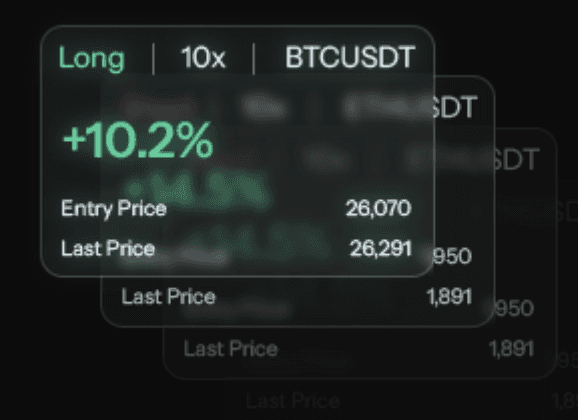Stop Market and Limit Orders: A Guide for Traders
Jun 22, 2023
Welcome, fellow traders, to the world of stop market and limit orders! In this post, we'll explore the concept of these order types and understand why traders rely on them for effective trading strategies. So, fasten your seatbelts, and get ready to unravel the secrets of stop market and limit orders in the dynamic realm of trading!
Chapter 1: Stop Market Orders
Stop market orders are powerful tools that traders use to manage risk and protect their positions. When placing a stop market order, traders set a specific trigger price at which the order is activated as a market order. This means that once the trigger price is reached, the order is executed at the prevailing market price. Stop market orders are commonly used to limit losses by triggering a sale when the price reaches a predetermined level. Understanding the mechanics and benefits of stop market orders is crucial for effective risk management in trading.
Chapter 2: Limit Orders
Limit orders offer traders a way to control the price at which they buy or sell an asset. Unlike market orders that are executed immediately at the prevailing market price, limit orders allow traders to specify the maximum price they are willing to pay for a buy order or the minimum price they expect to receive for a sell order. By placing limit orders, traders can enter or exit positions at desired price levels, even if the market conditions fluctuate. Limit orders provide traders with more control and precision in their trading decisions.
Chapter 3: Why Traders Use Stop Market and Limit Orders
Stop market and limit orders offer unique advantages to traders. Stop market orders allow for automatic execution once the trigger price is reached, ensuring quick action in volatile markets and protecting against unexpected price movements. Traders utilize stop market orders to limit potential losses and manage risk effectively. On the other hand, limit orders empower traders to set specific price levels for buying or selling, allowing them to take advantage of favorable entry or exit points. By utilizing limit orders, traders can exercise discipline, patience, and control over their trading activities.
Chapter 4: Incorporating Stop Market and Limit Orders into Trading Strategies
Integrating stop market and limit orders into trading strategies requires a thorough understanding of market conditions, price levels, and risk tolerance. Traders can use stop market orders to implement effective stop-loss strategies, defining the maximum loss they are willing to incur. Additionally, limit orders enable traders to set profit targets and automatically close positions once the desired price is reached. By incorporating these order types, traders can create a disciplined and systematic approach to their trading, enhancing their overall performance.
Conclusion: Harnessing the Power of Stop Market and Limit Orders
Congratulations, fellow traders, on gaining insights into the world of stop market and limit orders! With these tools at your disposal, you can manage risk, control entry and exit points, and refine your trading strategies. Remember to utilize stop market orders for risk management and limit orders for precision in your trading decisions. By harnessing the power of stop market and limit orders, you can navigate the dynamic world of trading with confidence and improve your chances of success.
Disclaimer: This post is for informational purposes only and should not be considered financial advice. It is essential to conduct thorough research and consult with professionals before making any investment decisions.
There you have it—a comprehensive guide to stop market and limit orders. Embrace these order types, adapt them to your trading style, and may your trading journey be filled with profitable opportunities and success!

Stop Market and Limit Orders: A Guide for Traders
Jun 22, 2023
Welcome, fellow traders, to the world of stop market and limit orders! In this post, we'll explore the concept of these order types and understand why traders rely on them for effective trading strategies. So, fasten your seatbelts, and get ready to unravel the secrets of stop market and limit orders in the dynamic realm of trading!
Chapter 1: Stop Market Orders
Stop market orders are powerful tools that traders use to manage risk and protect their positions. When placing a stop market order, traders set a specific trigger price at which the order is activated as a market order. This means that once the trigger price is reached, the order is executed at the prevailing market price. Stop market orders are commonly used to limit losses by triggering a sale when the price reaches a predetermined level. Understanding the mechanics and benefits of stop market orders is crucial for effective risk management in trading.
Chapter 2: Limit Orders
Limit orders offer traders a way to control the price at which they buy or sell an asset. Unlike market orders that are executed immediately at the prevailing market price, limit orders allow traders to specify the maximum price they are willing to pay for a buy order or the minimum price they expect to receive for a sell order. By placing limit orders, traders can enter or exit positions at desired price levels, even if the market conditions fluctuate. Limit orders provide traders with more control and precision in their trading decisions.
Chapter 3: Why Traders Use Stop Market and Limit Orders
Stop market and limit orders offer unique advantages to traders. Stop market orders allow for automatic execution once the trigger price is reached, ensuring quick action in volatile markets and protecting against unexpected price movements. Traders utilize stop market orders to limit potential losses and manage risk effectively. On the other hand, limit orders empower traders to set specific price levels for buying or selling, allowing them to take advantage of favorable entry or exit points. By utilizing limit orders, traders can exercise discipline, patience, and control over their trading activities.
Chapter 4: Incorporating Stop Market and Limit Orders into Trading Strategies
Integrating stop market and limit orders into trading strategies requires a thorough understanding of market conditions, price levels, and risk tolerance. Traders can use stop market orders to implement effective stop-loss strategies, defining the maximum loss they are willing to incur. Additionally, limit orders enable traders to set profit targets and automatically close positions once the desired price is reached. By incorporating these order types, traders can create a disciplined and systematic approach to their trading, enhancing their overall performance.
Conclusion: Harnessing the Power of Stop Market and Limit Orders
Congratulations, fellow traders, on gaining insights into the world of stop market and limit orders! With these tools at your disposal, you can manage risk, control entry and exit points, and refine your trading strategies. Remember to utilize stop market orders for risk management and limit orders for precision in your trading decisions. By harnessing the power of stop market and limit orders, you can navigate the dynamic world of trading with confidence and improve your chances of success.
Disclaimer: This post is for informational purposes only and should not be considered financial advice. It is essential to conduct thorough research and consult with professionals before making any investment decisions.
There you have it—a comprehensive guide to stop market and limit orders. Embrace these order types, adapt them to your trading style, and may your trading journey be filled with profitable opportunities and success!

Stop Market and Limit Orders: A Guide for Traders
Jun 22, 2023
Welcome, fellow traders, to the world of stop market and limit orders! In this post, we'll explore the concept of these order types and understand why traders rely on them for effective trading strategies. So, fasten your seatbelts, and get ready to unravel the secrets of stop market and limit orders in the dynamic realm of trading!
Chapter 1: Stop Market Orders
Stop market orders are powerful tools that traders use to manage risk and protect their positions. When placing a stop market order, traders set a specific trigger price at which the order is activated as a market order. This means that once the trigger price is reached, the order is executed at the prevailing market price. Stop market orders are commonly used to limit losses by triggering a sale when the price reaches a predetermined level. Understanding the mechanics and benefits of stop market orders is crucial for effective risk management in trading.
Chapter 2: Limit Orders
Limit orders offer traders a way to control the price at which they buy or sell an asset. Unlike market orders that are executed immediately at the prevailing market price, limit orders allow traders to specify the maximum price they are willing to pay for a buy order or the minimum price they expect to receive for a sell order. By placing limit orders, traders can enter or exit positions at desired price levels, even if the market conditions fluctuate. Limit orders provide traders with more control and precision in their trading decisions.
Chapter 3: Why Traders Use Stop Market and Limit Orders
Stop market and limit orders offer unique advantages to traders. Stop market orders allow for automatic execution once the trigger price is reached, ensuring quick action in volatile markets and protecting against unexpected price movements. Traders utilize stop market orders to limit potential losses and manage risk effectively. On the other hand, limit orders empower traders to set specific price levels for buying or selling, allowing them to take advantage of favorable entry or exit points. By utilizing limit orders, traders can exercise discipline, patience, and control over their trading activities.
Chapter 4: Incorporating Stop Market and Limit Orders into Trading Strategies
Integrating stop market and limit orders into trading strategies requires a thorough understanding of market conditions, price levels, and risk tolerance. Traders can use stop market orders to implement effective stop-loss strategies, defining the maximum loss they are willing to incur. Additionally, limit orders enable traders to set profit targets and automatically close positions once the desired price is reached. By incorporating these order types, traders can create a disciplined and systematic approach to their trading, enhancing their overall performance.
Conclusion: Harnessing the Power of Stop Market and Limit Orders
Congratulations, fellow traders, on gaining insights into the world of stop market and limit orders! With these tools at your disposal, you can manage risk, control entry and exit points, and refine your trading strategies. Remember to utilize stop market orders for risk management and limit orders for precision in your trading decisions. By harnessing the power of stop market and limit orders, you can navigate the dynamic world of trading with confidence and improve your chances of success.
Disclaimer: This post is for informational purposes only and should not be considered financial advice. It is essential to conduct thorough research and consult with professionals before making any investment decisions.
There you have it—a comprehensive guide to stop market and limit orders. Embrace these order types, adapt them to your trading style, and may your trading journey be filled with profitable opportunities and success!

Supercharge your trading game with Market Mapper today!




